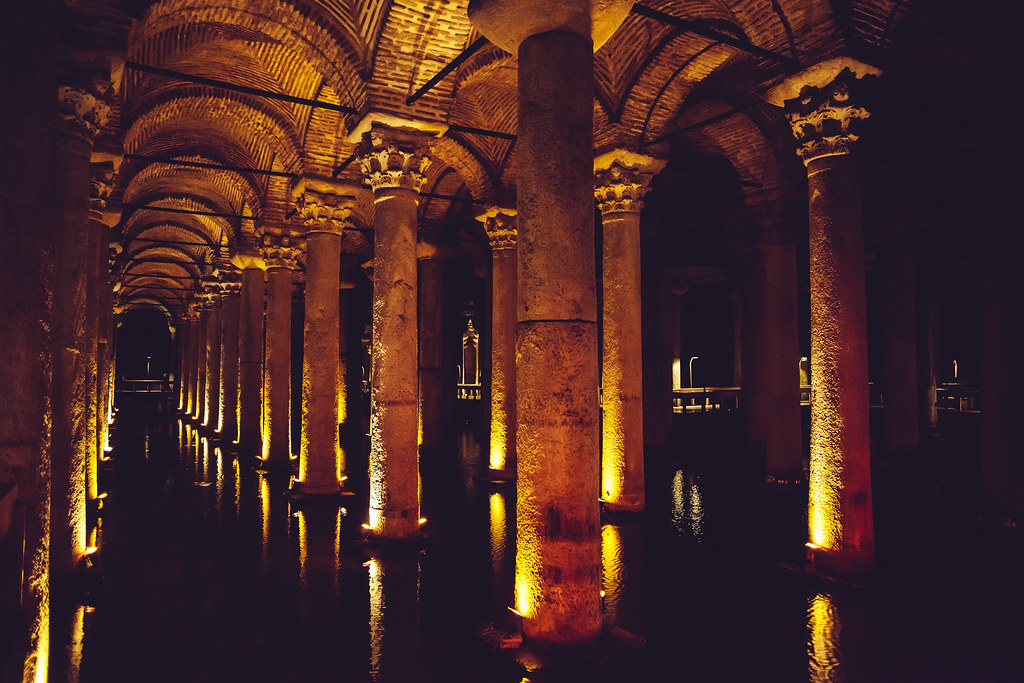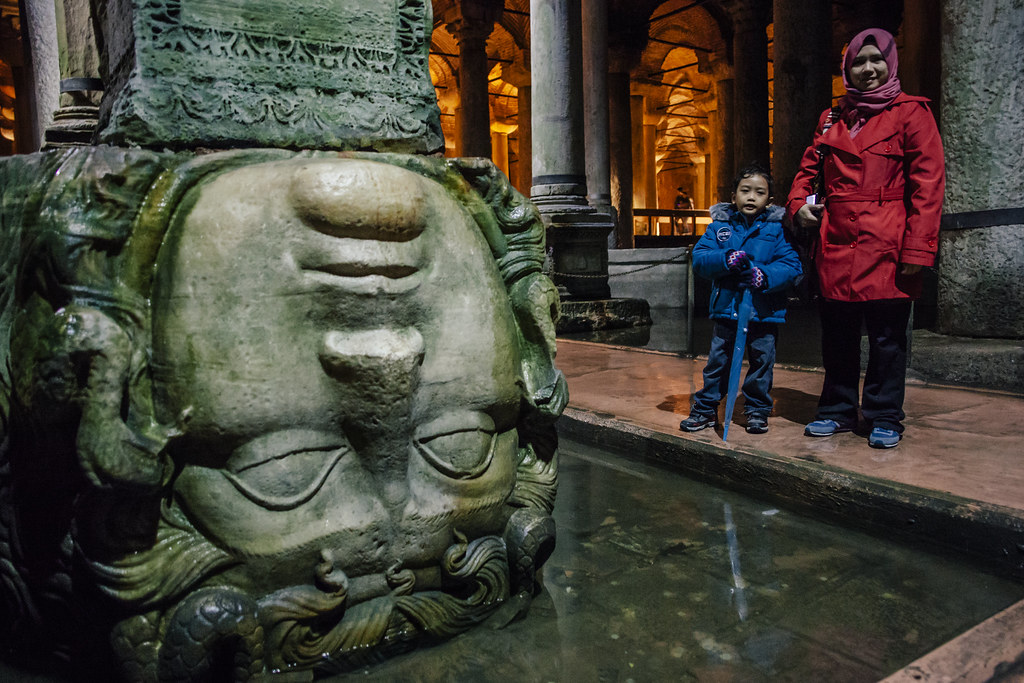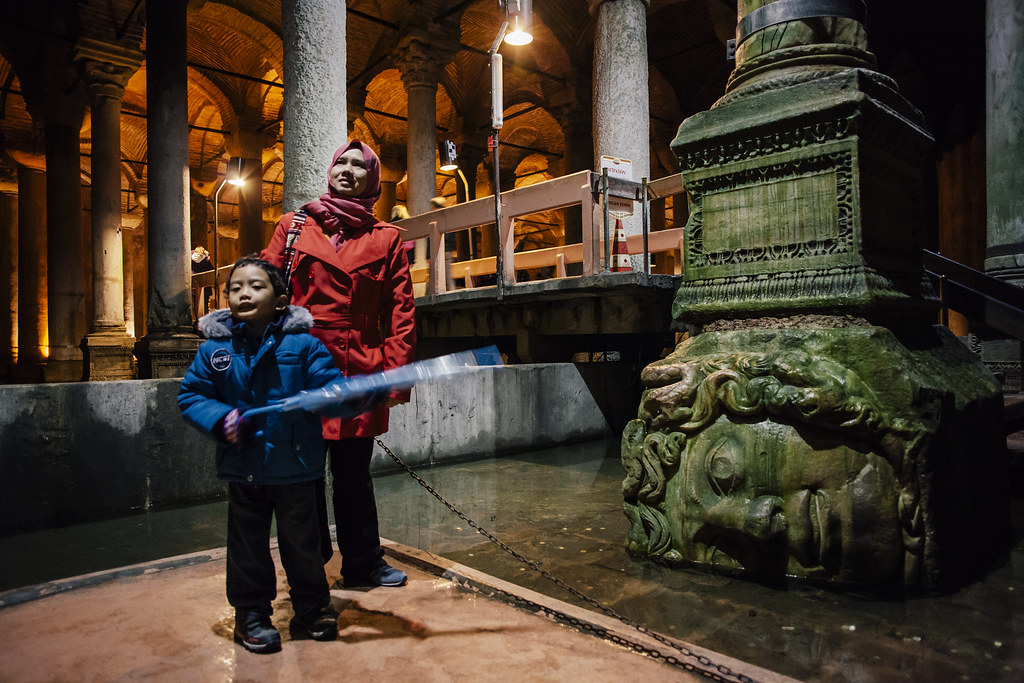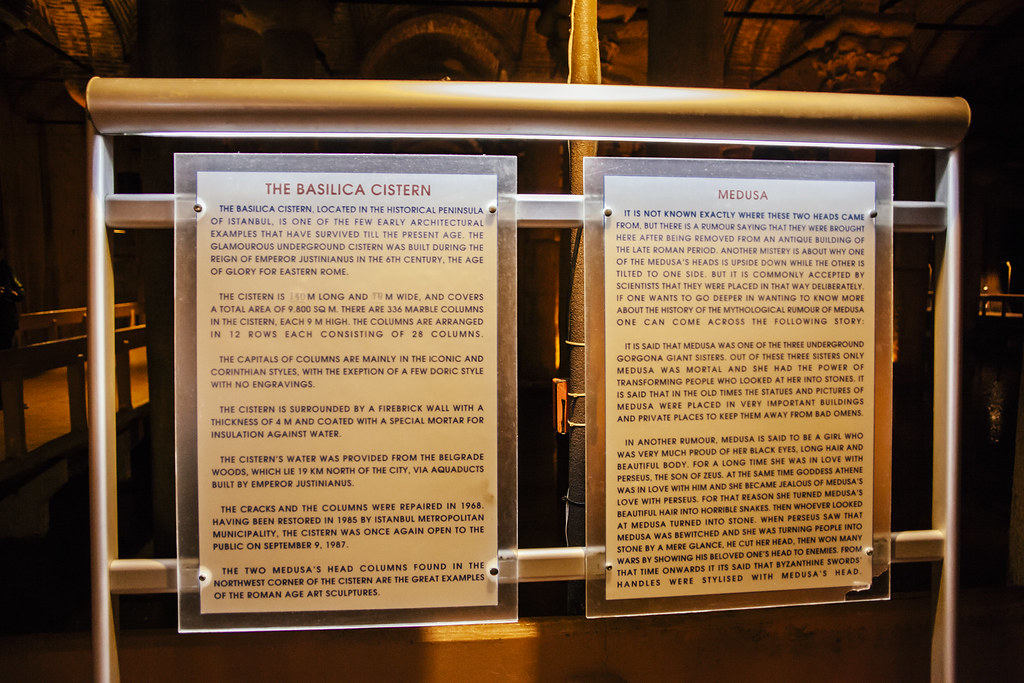Travel Photography | Istanbul | Basilica Cistern and The Mystery of Medusa
© 2013 Wazari Wazir | Basilica Cistern | The Entrance
© 2013 Wazari Wazir | Basilica Cistern and Medusa
It was very easy to miss this place, I’ve been to Istanbul thrice and only during my third visit that I was able to locate this place. Actually it is not hidden somewhere but very easily to go unnoticed.
The entrance to the Basilica Cistern of Istanbul is across the street from the Haghia Sophia, opposite the yellow building of the Tourist Police in Sultanahmet. This immense underground water container was built during the reign of Emperor Justinian I in 532 to meet the water needs of the Great Palace. This marvellous piece of engineering only confirms yet again that those were the heydays of the Byzantine Empire. You can refer to my picture above, the entrance of the Basilica Cistern, from the outside, it is not something that will get your eyes attention. During my second visit, I thought that it was the entrance to the toilet, please forgive me for not getting closer and take a closer look at what’s written at the outside of the doorway.
There are hundreds of ancient cisterns hidden underneath the streets and houses of Istanbul. Of the two that are open to the public, the Basilica Cistern (Yerebatan Sarnıcı) is the largest and Istanbul’s most unusual tourist attraction. Looking at the photograph above, some of you might be thinking of taking a tripod inside, unfortunately, tripod are not allowed inside the Basilica Cistern, if you happen to arrived at the ticket counter with your tripod, the security officer will ask you to leave your tripod at the security office and you can take it back once you finish touring the place.
The lighting was very low inside there, yes you can use flash inside there, no problem with that, if you wanted to take a photograph of your family, friends or your self portrait inside, yes you can use flash but if you wanted to photograph this place without killing the atmosphere, then you should use the available light there but the problem is that, the lighting was very low, for the photographs above, I have to use somewhere around ISO 3000 to ISO 4000.
If you interested to know about the mystery of Medusa head there, you might wanted to read this :
MEDUSA
It is not known exactly where these two heads came from, but there is a rumour saying that they were brought here after being removed from an antique building of the late Roman period. Another mystery is about why one of the Medusa heads is upside down while the other is tilted to one side.
But it is commonly accepted by scientist that they were placed in that way deliberately. If one wants to go deeper in wanting to know more about the history of the mythological of Medusa one can come across the following story :
It is said that Medusa was one of the three underground Gorgona Giant Sisters. Out of these three sisters only Medusa was mortal and she had the power of transforming people who looked at her into stones. It is said that in the old times the statues and pictures of Medusa were placed in very important buildings and private places to keep them away from bad omen.
in another rumour, Medusa is said to be a girl who was very much proud of her black eyes, long hair and beautiful body. For a long time she was in love with Perseus, the son of Zeus. At the same time Goddess Athene was in love with him and she become jealous of Medusa love with perseus. For that reason she turned Medusa’s beautiful hair into horrible snakes. Then whoever looked at Medusa turned into stone. When Perseus saw that Medusa was bewitched and she was turning people into stone by a mere glance, he cut her head, then won many wars by showing his beloved one’s head to enemies.
Medusa, a sea nymph, was the most beautiful of the three Gorgon sisters. She was courted by Poseidon, and made love to him in a temple of Athena.
Furious, Athena transformed Medusa into a monstrous chthonic beast with snakes instead of hair, whose frightening face could turn onlookers to stone. She was beheaded while sleeping by the hero Perseus, who thereafter used her head as a weapon until giving it to the goddess Athena to place on her shield.
Having coupled with Poseidon previously, two beings sprang from her body when she was beheaded. One, Pegasus, was a winged horse later tamed by Bellerophon to help him kill the chimera. The other, Chrysaor of the Golden Sword, remains relatively unknown today.
In classical antiquity and today, the image of the head of Medusa finds expression in the evil-averting device.
From that time onwards it is said that Byzantine swords handles were stylised with Medusa’s head.
Before closing on, I would like to let you know that the area is slippery, so you have to watch your steps carefully and if you are traveling with kids, it is a great place to bring them here, just watch them carefully. The cistern can store up to 100, 000 tons (almost 3 million cubic feet) of water underground and still holds a few feet of water with fish swimming around the columns. Let your children be entertain with the swimming fish inside the pond and let them mesmerised listening to the sounds of dripping water mingle with the strains of classical music.








